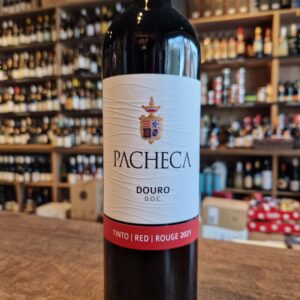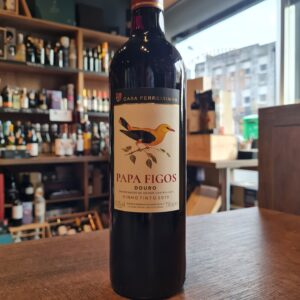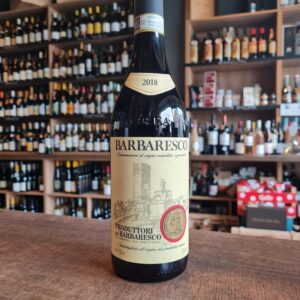-
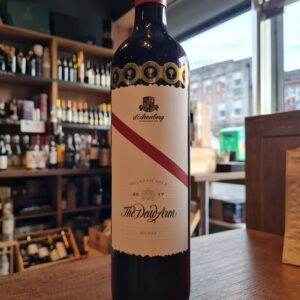 The Dead Arm is d’Arenberg’s flagship Shiraz and takes its name from a vine disease that kills off one “arm” of the plant while the other side of the vine produces remarkably intense and delicious fruit. The grapes for this bottling come from low yielding old vines on the estate which are harvested in small parcels and vinified plot by plot to give maximum control over the blending. Established in 1912, d’Arenberg is one of the McLaren Vale’s most iconic wineries which boasts some extremely old Shiraz vines planted back in the 1880s. The estate’s chief winemaker is Chester Osborn, the great-grandson of d’Arenberg’s original founder Joseph Rowe Osborn who was actually a teetotaler who used to sell his grapes on to local wineries. Powerful and ageworthy wine with firm tannins and a well-developed structure that will respond well another couple of decade or so in the cellar. Pair with hearty red meat dishes if you’d prefer to enjoy it now.
The Dead Arm is d’Arenberg’s flagship Shiraz and takes its name from a vine disease that kills off one “arm” of the plant while the other side of the vine produces remarkably intense and delicious fruit. The grapes for this bottling come from low yielding old vines on the estate which are harvested in small parcels and vinified plot by plot to give maximum control over the blending. Established in 1912, d’Arenberg is one of the McLaren Vale’s most iconic wineries which boasts some extremely old Shiraz vines planted back in the 1880s. The estate’s chief winemaker is Chester Osborn, the great-grandson of d’Arenberg’s original founder Joseph Rowe Osborn who was actually a teetotaler who used to sell his grapes on to local wineries. Powerful and ageworthy wine with firm tannins and a well-developed structure that will respond well another couple of decade or so in the cellar. Pair with hearty red meat dishes if you’d prefer to enjoy it now. -
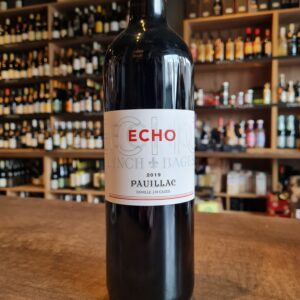 Thomas Lynch was a descendant of the Tribes of Galway. His father John emigrated in 1691 from Galway, Ireland to Bordeaux, inherited an estate in the village of Bages through his wife, Elizabeth, in 1749. This year represents the foundation of Château Lynch-Bages, which Thomas passed on to his son, Jean-Baptiste, upon his marriage in 1779. Jean-Baptiste soon handed over supervision to his brother Michel who maintained responsibility for the Bages estate until 1824, when the family sold it to a Swiss wine merchant, Sebastien Jurine, who had recently moved to Bordeaux. Château Lynch-Bages remained in the hands of the Jurine family, followed by the Cayrou family, for over a hundred years. In 1934, Jean-Charles Cazes rented the property from its then owner, Felix de Vial, subsequently purchasing it in 1938. After Jean-Charles Cazes’ death, aged 95, in 1972, the estate has been largely managed by his grandson, Jean-Michel Cazes.[2] In the late 1980s, the AXA Millésimes group began to develop a portfolio of wine property holdings, and approached Jean-Michel Cazes for help (Claude Bébéar, the AXA President, was a long-time Cazes family friend). They established Châteaux & Associés, which Cazes ran until he reached 65, and which by the end of the twentieth century owned many vineyards across Europe. Ownership of Château Lynch-Bages, however, remains with the Cazes family. In 2017, the Cazes family has acquired Château Haut-Batailley, the 1855 Grand Cru Classé estate in Pauillac. In the interest of sustainable development, agriculture is in every way reasoned: fertilization methods defined precisely and adapted to soil, optimized phytosanitary control, use of sexual confusion against worms of the bunch, controlled grassing of plots for control the vigor of the vine, prolonged rest of the soil by flowering fallow land … The use of neutral products for the environment is everywhere privileged.
Thomas Lynch was a descendant of the Tribes of Galway. His father John emigrated in 1691 from Galway, Ireland to Bordeaux, inherited an estate in the village of Bages through his wife, Elizabeth, in 1749. This year represents the foundation of Château Lynch-Bages, which Thomas passed on to his son, Jean-Baptiste, upon his marriage in 1779. Jean-Baptiste soon handed over supervision to his brother Michel who maintained responsibility for the Bages estate until 1824, when the family sold it to a Swiss wine merchant, Sebastien Jurine, who had recently moved to Bordeaux. Château Lynch-Bages remained in the hands of the Jurine family, followed by the Cayrou family, for over a hundred years. In 1934, Jean-Charles Cazes rented the property from its then owner, Felix de Vial, subsequently purchasing it in 1938. After Jean-Charles Cazes’ death, aged 95, in 1972, the estate has been largely managed by his grandson, Jean-Michel Cazes.[2] In the late 1980s, the AXA Millésimes group began to develop a portfolio of wine property holdings, and approached Jean-Michel Cazes for help (Claude Bébéar, the AXA President, was a long-time Cazes family friend). They established Châteaux & Associés, which Cazes ran until he reached 65, and which by the end of the twentieth century owned many vineyards across Europe. Ownership of Château Lynch-Bages, however, remains with the Cazes family. In 2017, the Cazes family has acquired Château Haut-Batailley, the 1855 Grand Cru Classé estate in Pauillac. In the interest of sustainable development, agriculture is in every way reasoned: fertilization methods defined precisely and adapted to soil, optimized phytosanitary control, use of sexual confusion against worms of the bunch, controlled grassing of plots for control the vigor of the vine, prolonged rest of the soil by flowering fallow land … The use of neutral products for the environment is everywhere privileged. -
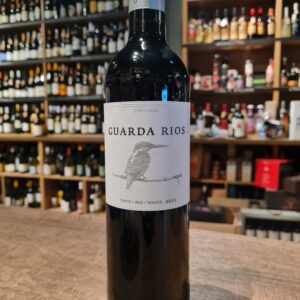 The first Guarda Rios harvest was done in 2006 and, curiously, not in the Alentejo. This wine is associated to the Winemaker and Director of Monte da Ravasqueira, who, in 2012, brought the Guarda Rios with him. Like the birds, this wine migrated and settled next to the dams on a property in Arraiolois, where it found the ideal terroir in which to express all its exuberance and vivacity. The family currently owns 45 hectares under vine in the Alentejo Plains. The highlight of this vineyard is that there are close to 8 diverse soil types and 29 carefully selected plots here. Therefore, it is great for growing quite a few full-bodied grape varietals. The vines are grown at an average height of about 270m above sea level. The Alentejo Plains cover almost one-third of Portugal, and are home to various soil types such as clay, sandy, marble, granite, limestone, shale and more. Thanks to the hot & dry Mediterranean climate in this area, it is ideal for growing some of the rare & indigenous varietals. The native reds grown here are Aragonez, Trincadeira and Alicante Bouschet. Roupeiro, Arinto and Antao Vaz are the native whites grown here. All of these are grown in organized regions along Alentejo. The main regions of the plains where the vines are grown with utmost care & dedication are Borba, Redondo, Reguengos and Evora. These regions are divided based on their climate, soil quality and their ability to create full-bodied & aromatic grapes.
The first Guarda Rios harvest was done in 2006 and, curiously, not in the Alentejo. This wine is associated to the Winemaker and Director of Monte da Ravasqueira, who, in 2012, brought the Guarda Rios with him. Like the birds, this wine migrated and settled next to the dams on a property in Arraiolois, where it found the ideal terroir in which to express all its exuberance and vivacity. The family currently owns 45 hectares under vine in the Alentejo Plains. The highlight of this vineyard is that there are close to 8 diverse soil types and 29 carefully selected plots here. Therefore, it is great for growing quite a few full-bodied grape varietals. The vines are grown at an average height of about 270m above sea level. The Alentejo Plains cover almost one-third of Portugal, and are home to various soil types such as clay, sandy, marble, granite, limestone, shale and more. Thanks to the hot & dry Mediterranean climate in this area, it is ideal for growing some of the rare & indigenous varietals. The native reds grown here are Aragonez, Trincadeira and Alicante Bouschet. Roupeiro, Arinto and Antao Vaz are the native whites grown here. All of these are grown in organized regions along Alentejo. The main regions of the plains where the vines are grown with utmost care & dedication are Borba, Redondo, Reguengos and Evora. These regions are divided based on their climate, soil quality and their ability to create full-bodied & aromatic grapes. -
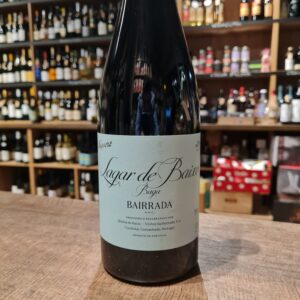 The huge passion of Dirk Niepoort for Baga variety and the fantastic terroir of the Bairrada region led him to look for small parcels of Baga in very old vines, scattered throughout the Cantanhede region, over the past three years. These wines were light in color and alcoholic content, elegant and fine, soon after bottling, but with a huge ageing potential. With the acquisition of the Quinta de Baixo in 2012, it became possible to recreate the Lagar de Baixo brand, moving towards a classically-styled wine which highlights the nobility of Baga grown in Bairrada. The red Lagar de Baixo is the result of a combination of very old vines and younger vines: complex, serious, but with some youth and grip. The 2020 Lagar de Baixo is our most classic wine from Quinta de Baixo and the wine that best reflects the Bairrada terroir. It is fermented in lagares and aged in used barrels. Food Suggestion: Venison dishes (partridge, wild boar), pork and bean stew, baked cod. Vegetarian suggestions: dishes with legumes (red kidney beans, lentils).
The huge passion of Dirk Niepoort for Baga variety and the fantastic terroir of the Bairrada region led him to look for small parcels of Baga in very old vines, scattered throughout the Cantanhede region, over the past three years. These wines were light in color and alcoholic content, elegant and fine, soon after bottling, but with a huge ageing potential. With the acquisition of the Quinta de Baixo in 2012, it became possible to recreate the Lagar de Baixo brand, moving towards a classically-styled wine which highlights the nobility of Baga grown in Bairrada. The red Lagar de Baixo is the result of a combination of very old vines and younger vines: complex, serious, but with some youth and grip. The 2020 Lagar de Baixo is our most classic wine from Quinta de Baixo and the wine that best reflects the Bairrada terroir. It is fermented in lagares and aged in used barrels. Food Suggestion: Venison dishes (partridge, wild boar), pork and bean stew, baked cod. Vegetarian suggestions: dishes with legumes (red kidney beans, lentils). -
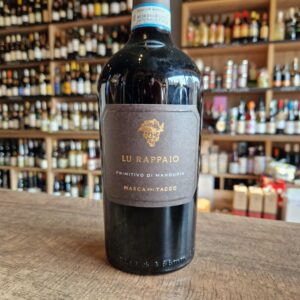 Primitivo is practically synonymous with Puglia and the south of Italy. If you truly want to experience the quality of a fine Primitivo di Manduria, try this wine. It must be said that the Primitivo di Manduria is slightly different from the rest of Puglia. Manduria has a privileged location, right in the middle of the Salento peninsula.This allows the marine breeze coming from both the Adriatic Sea and the Ionian Sea to refresh the vineyard. The soil is composed of limestone with iron oxide fossils, giving it a distinctive red color. This soil is also known as Terra Rossa and it is typical of the Mediterranean region.The climate is ideal too, with mild winters and extremely hot summers and according to Decanter, "Primitivo is the most sun-loving grape I have seen." It goes well with dark and white meat from the grill or from the oven. Also a pleasant red wine with pasta dishes with spicy sauces as well as spicy cheeses. Its elegance and structure make it a perfect wine for romantic evenings or important dinners
Primitivo is practically synonymous with Puglia and the south of Italy. If you truly want to experience the quality of a fine Primitivo di Manduria, try this wine. It must be said that the Primitivo di Manduria is slightly different from the rest of Puglia. Manduria has a privileged location, right in the middle of the Salento peninsula.This allows the marine breeze coming from both the Adriatic Sea and the Ionian Sea to refresh the vineyard. The soil is composed of limestone with iron oxide fossils, giving it a distinctive red color. This soil is also known as Terra Rossa and it is typical of the Mediterranean region.The climate is ideal too, with mild winters and extremely hot summers and according to Decanter, "Primitivo is the most sun-loving grape I have seen." It goes well with dark and white meat from the grill or from the oven. Also a pleasant red wine with pasta dishes with spicy sauces as well as spicy cheeses. Its elegance and structure make it a perfect wine for romantic evenings or important dinners -
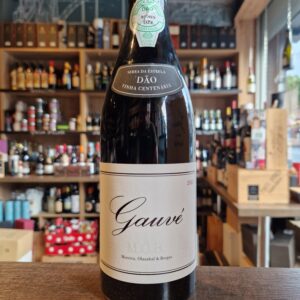 This project was born from the will of three winemakers, Jorge Moreira, Francisco Olazabal and Jorge Serôdio Borges, to make a wine together. The chosen region was the Dão, a region for which there is a common admiration that was born in the tasting of older wines, from the 60s and 70s that surprise for their elegance and freshness. The identity and complexity of these wines is indeed remarkable and serves as an inspiration for MOB wines.
This project was born from the will of three winemakers, Jorge Moreira, Francisco Olazabal and Jorge Serôdio Borges, to make a wine together. The chosen region was the Dão, a region for which there is a common admiration that was born in the tasting of older wines, from the 60s and 70s that surprise for their elegance and freshness. The identity and complexity of these wines is indeed remarkable and serves as an inspiration for MOB wines. -
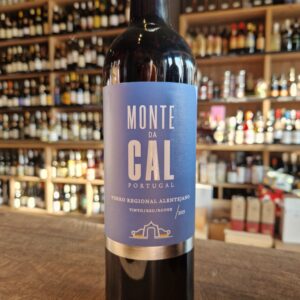 It is in the heart of the genuine Alentejo, with its unique aromas, flavors and textures, nature, silence and immensity, that the 80 hectares of vineyards at Herdade Monte da Cal, located in the municipality of Fronteira, in the parish of São Saturnino, extend over 80 hectares of vineyards. about 40 km from Portalegre. Surrounded by the tranquility of the northern Alentejo plain, it is part of the calm environment of nature characteristic of this part of the country, surrounded by an infinity of vineyards, which we can only see, far away. Here, the red varieties Trincadeira, Syrah, Aragonês, Alicante Bouschet, Alfrocheiro and Touriga Nacional are planted. The architecture and decoration of the estate reflect the Arab influences, so present in the Alentejo culture. The estate’s modern winery is a fundamental pillar to reinforce the visibility of the wines of this house, and a wine tourism project is already planned for this property. Suggested pairing with dishes from the Mediterranean, Chinese, Indian and African cuisine.
It is in the heart of the genuine Alentejo, with its unique aromas, flavors and textures, nature, silence and immensity, that the 80 hectares of vineyards at Herdade Monte da Cal, located in the municipality of Fronteira, in the parish of São Saturnino, extend over 80 hectares of vineyards. about 40 km from Portalegre. Surrounded by the tranquility of the northern Alentejo plain, it is part of the calm environment of nature characteristic of this part of the country, surrounded by an infinity of vineyards, which we can only see, far away. Here, the red varieties Trincadeira, Syrah, Aragonês, Alicante Bouschet, Alfrocheiro and Touriga Nacional are planted. The architecture and decoration of the estate reflect the Arab influences, so present in the Alentejo culture. The estate’s modern winery is a fundamental pillar to reinforce the visibility of the wines of this house, and a wine tourism project is already planned for this property. Suggested pairing with dishes from the Mediterranean, Chinese, Indian and African cuisine. -
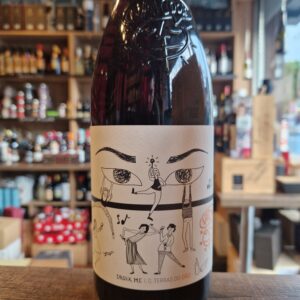 Nat Cool is an innovative, naturally “cool and funky” concept initiated by Niepoort in the Vinho Verde wine region. The movement later expanded into Bairrada and the Douro Valley and is now represented in various Portuguese as well as international wine regions. Nat Cool is not just about producing low-intervention wines – it embodies a movement uniting many different producers striving towards a shared goal of crafting uncomplicated, light and easy-to-drink wines. In 2020, the Nat Cool “family” grew, with its foray into Portugal’s Dão region. It is here, on the slopes of the Serra da Estrela Mountain Range that the DrinkMe Nat Cool is created and where we explore the region’s potential for elegant, fresh and straight-forward wines. Pair it with Light and simple dishes as well as comfort food
Nat Cool is an innovative, naturally “cool and funky” concept initiated by Niepoort in the Vinho Verde wine region. The movement later expanded into Bairrada and the Douro Valley and is now represented in various Portuguese as well as international wine regions. Nat Cool is not just about producing low-intervention wines – it embodies a movement uniting many different producers striving towards a shared goal of crafting uncomplicated, light and easy-to-drink wines. In 2020, the Nat Cool “family” grew, with its foray into Portugal’s Dão region. It is here, on the slopes of the Serra da Estrela Mountain Range that the DrinkMe Nat Cool is created and where we explore the region’s potential for elegant, fresh and straight-forward wines. Pair it with Light and simple dishes as well as comfort food -
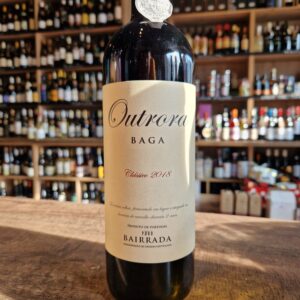 This Bairrada Classic wine is a tribute to the centenary vineyards, matriarchs of the region and witnesses of past times. The grapes are selected from 80 to 120 year old vines from our vineyard in the Cadoiços Valley. Winemaking in “lagar” with foot treading, besides being an old technique, we believe it remains the best way to obtain great wines of this variety. The two-year oak stage and subsequent bottle rest give the elegance and balance needed for a wine to be tasted for many years. An Impressive Bairrada!An Impressive Wine! Goes well with buttered Goat and Sheep Cheeses, traditional sausages (raw, boiled, or roasted), red meats
This Bairrada Classic wine is a tribute to the centenary vineyards, matriarchs of the region and witnesses of past times. The grapes are selected from 80 to 120 year old vines from our vineyard in the Cadoiços Valley. Winemaking in “lagar” with foot treading, besides being an old technique, we believe it remains the best way to obtain great wines of this variety. The two-year oak stage and subsequent bottle rest give the elegance and balance needed for a wine to be tasted for many years. An Impressive Bairrada!An Impressive Wine! Goes well with buttered Goat and Sheep Cheeses, traditional sausages (raw, boiled, or roasted), red meats -
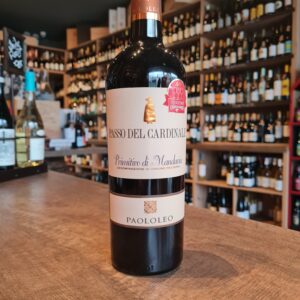 The Primitivo Paolo Leo Pass of the Cardinal is an ancient grape grape cultivated in Apulia, whose grapes present a very early maturation in comparison to other varieties, the name of which explains. One of the most interesting particularities of the Primitivo is the fact that, at a distance of only 20 days from the harvest, these grape vines are able to give a discreet second production of grapes. Traditionally, the fruits of this "second harvest" are used to increase the freshness of these ponderous wines, improving the deimosti acidity obtained from the first harvesting. The great body of the Primitivo di Manduria di Passo del Cardinale is able to enhance fine meats with a rigorous structure. Sliced beef and grilled steaks are the backdrop for a panoramic photograph. A touch of Puglia with orecchiette with chops sauce can be a gastronomic journey with which you can surprise your guests.
The Primitivo Paolo Leo Pass of the Cardinal is an ancient grape grape cultivated in Apulia, whose grapes present a very early maturation in comparison to other varieties, the name of which explains. One of the most interesting particularities of the Primitivo is the fact that, at a distance of only 20 days from the harvest, these grape vines are able to give a discreet second production of grapes. Traditionally, the fruits of this "second harvest" are used to increase the freshness of these ponderous wines, improving the deimosti acidity obtained from the first harvesting. The great body of the Primitivo di Manduria di Passo del Cardinale is able to enhance fine meats with a rigorous structure. Sliced beef and grilled steaks are the backdrop for a panoramic photograph. A touch of Puglia with orecchiette with chops sauce can be a gastronomic journey with which you can surprise your guests. -
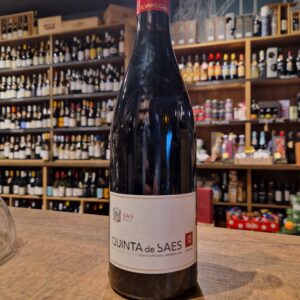 Dão is quickly becoming the most sought-after region for Portuguese winemakers to venture into; according to many, it’s one of the world’s most perfect microclimates: mountains protect it from continental heat to the east and Douro’s heat to north, and cool Atlantic breezes come inland to keep the overall temperatures more regulated, making for wines with bright acidity, ethereal aromatics, and compelling complexity. The DO’s granitic soils allow indigenous grapes to shine through in the wines, and provide firm, crunchy tannin against the bright fruit. Alvaro Castro has noted that “if God were to design a wine-growing region, what he would come up with would look a lot like the Dão.” There is no modern Dão without one of the region’s longtime legends, Alvaro Castro, whose estate encompasses two small properties (or “quintas”) known as Pellada and Saes. Alvaro makes wine here with his daughter Maria, carrying on a tradition of winemaking on this property that dates to the 16th century! Together, they have resisted the internationalization push of the ‘80s and ‘90s, instead doubling down on their slow-wine approach, using local varieties grown and crafted in the true Dāo “field blend” style. The Dão is home to the finest plantings of Touriga Naçional in Portugal. The microclimate that protects it from the extreme heat of the eastern winds and the overly wet conditions to the north and west provides a cool, temperate setting for Touriga to showcase its hallmark rose petal aromatics and soft fruit. Aged in neutral oak, this is a pure, unadulterated expression of Dão Touriga. Average age of 15 years. Tended in granite and clay soil at 550m (1811ft) elevation. Pair with roast pork, lighter game like rabbit and quail, and mushroom dishes.
Dão is quickly becoming the most sought-after region for Portuguese winemakers to venture into; according to many, it’s one of the world’s most perfect microclimates: mountains protect it from continental heat to the east and Douro’s heat to north, and cool Atlantic breezes come inland to keep the overall temperatures more regulated, making for wines with bright acidity, ethereal aromatics, and compelling complexity. The DO’s granitic soils allow indigenous grapes to shine through in the wines, and provide firm, crunchy tannin against the bright fruit. Alvaro Castro has noted that “if God were to design a wine-growing region, what he would come up with would look a lot like the Dão.” There is no modern Dão without one of the region’s longtime legends, Alvaro Castro, whose estate encompasses two small properties (or “quintas”) known as Pellada and Saes. Alvaro makes wine here with his daughter Maria, carrying on a tradition of winemaking on this property that dates to the 16th century! Together, they have resisted the internationalization push of the ‘80s and ‘90s, instead doubling down on their slow-wine approach, using local varieties grown and crafted in the true Dāo “field blend” style. The Dão is home to the finest plantings of Touriga Naçional in Portugal. The microclimate that protects it from the extreme heat of the eastern winds and the overly wet conditions to the north and west provides a cool, temperate setting for Touriga to showcase its hallmark rose petal aromatics and soft fruit. Aged in neutral oak, this is a pure, unadulterated expression of Dão Touriga. Average age of 15 years. Tended in granite and clay soil at 550m (1811ft) elevation. Pair with roast pork, lighter game like rabbit and quail, and mushroom dishes. -
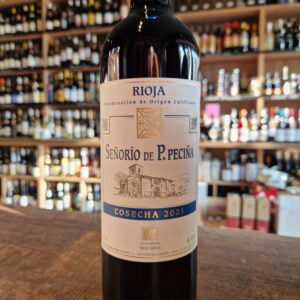 Bodegas Hermanos de Peciña is firmly planted in the old school camp. Although the estate was started only in 1992, its founder, Pedro Peciña had worked for over 20 years prior to that as the head agronomist for La Rioja Alta, learning all facets of production and especially the planting and managing of all the estate’s vineyards. The Peciña winery and vineyards are located in San Vicente, which while technically in the Rioja Alta sub-zone, is not in the vicinity of Haro where most of the other traditional Rioja houses have their cellars. Rather it is located on the northeast side of the Ebro river near the border of the Basque Alavesa zone. These vineyards - many 40 to 60 years old - are actually some of the finest in the appellation as they fall at the foothills of the Sierra Cantabria Mountains at an average of 500 meters, and offer hillside expositions as well as complex and diverse soils. Many of Peciña’s most prized vineyards are actually on north facing slopes which Pedro feels helps give the wines good freshness and delineation. Serve with aperitif, Charcuterie, Cured cheeses, Smoked foods
Bodegas Hermanos de Peciña is firmly planted in the old school camp. Although the estate was started only in 1992, its founder, Pedro Peciña had worked for over 20 years prior to that as the head agronomist for La Rioja Alta, learning all facets of production and especially the planting and managing of all the estate’s vineyards. The Peciña winery and vineyards are located in San Vicente, which while technically in the Rioja Alta sub-zone, is not in the vicinity of Haro where most of the other traditional Rioja houses have their cellars. Rather it is located on the northeast side of the Ebro river near the border of the Basque Alavesa zone. These vineyards - many 40 to 60 years old - are actually some of the finest in the appellation as they fall at the foothills of the Sierra Cantabria Mountains at an average of 500 meters, and offer hillside expositions as well as complex and diverse soils. Many of Peciña’s most prized vineyards are actually on north facing slopes which Pedro feels helps give the wines good freshness and delineation. Serve with aperitif, Charcuterie, Cured cheeses, Smoked foods -
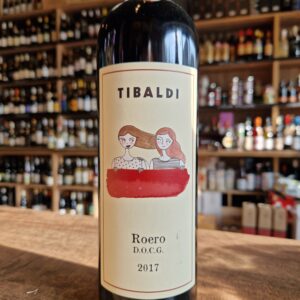 The Tibaldi family have been grape growers for several generations in the Pocapaglia area of Piemonte. In fact Nonno Tibaldi at 86 still works in the vineyard (starting with a glass from the barrel at 6am) with his son, Stefano. The Tibaldi’s have not traditionally made wine preferring to sell their crops to local producers. Stefano had 2 daughters, Monica and Daniela, and had no expectations that they would devote their lives to wine. But eldest daughter Monica studied Oenology and decided that she was going to start to make wine from the family’s wonderful fruit. Sister Daniela soon followed. And so Cantina Tibaldi was established. I simply know them as the Tibaldi Sisters. It is not unusual to see female winemakers in charge of important vineyards. Some of Australia’s finest wines are made by women and they will tell you that they are much better suited to the role as the olfactory senses are far more developed in females. What is unusual is to see the entire wine making process managed from start to finish by two women, both in their mid twenties. It can accompany any meat. Gives its best with important cheese, savory pasta and meat dishes.
The Tibaldi family have been grape growers for several generations in the Pocapaglia area of Piemonte. In fact Nonno Tibaldi at 86 still works in the vineyard (starting with a glass from the barrel at 6am) with his son, Stefano. The Tibaldi’s have not traditionally made wine preferring to sell their crops to local producers. Stefano had 2 daughters, Monica and Daniela, and had no expectations that they would devote their lives to wine. But eldest daughter Monica studied Oenology and decided that she was going to start to make wine from the family’s wonderful fruit. Sister Daniela soon followed. And so Cantina Tibaldi was established. I simply know them as the Tibaldi Sisters. It is not unusual to see female winemakers in charge of important vineyards. Some of Australia’s finest wines are made by women and they will tell you that they are much better suited to the role as the olfactory senses are far more developed in females. What is unusual is to see the entire wine making process managed from start to finish by two women, both in their mid twenties. It can accompany any meat. Gives its best with important cheese, savory pasta and meat dishes.


